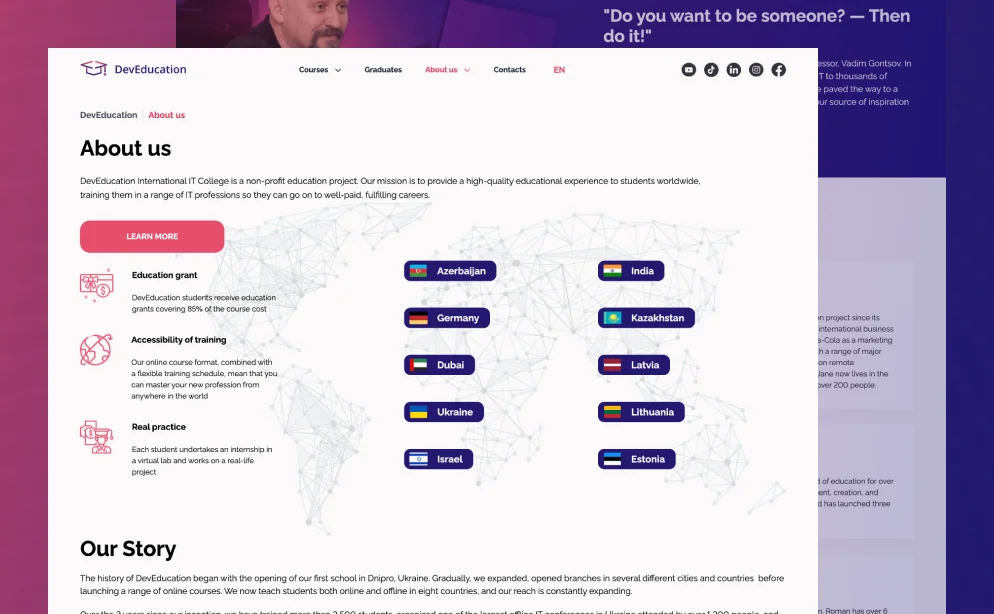You can easily use this matrix to update relationships in your project, identify orphaned requirements, and ensure Test Coverage. This video shows you how to create an Intersection RTM using the work items from your project. Whenever you need a high-level view of the requirements and testing, you can look at our real-time dashboard. It automatically collects live data and crunches the numbers to show you six metrics in easy-to-read graphs and charts. Monitor your team’s workload, tasks and time while also checking on costs and more. The forward traceability matrix is used to see the requirements of the test cases.

Tracking capabilities enable organizations closely follow the progress of a product throughout the manufacturing process (sometimes, from the supplier as well) and on to the final consumer. Tracing provides the means to follow the sequence of production vertically along the value chain, allowing organizations discover the origination and history of products. Some assurance is needed to show that the design fulfills the software requirements and that no requirements are lost or left out of the design. One method of providing this “check and balance” is to create a traceability matrix between the software requirements and the resulting design. The manually intensive aspect tightly links requirements matrices to version control; each time a requirements document is updated, the matrix must be thoroughly reviewed as well. Nonetheless, requirements matrices are quite useful for many organizations and analysts, depending on the size of the project and the level of granularity needed.
Chain Traceability
To make it more clear horizontal traceability is a sibling kind of relationship while vertical traceability can be treated as parent-child relationship. Because you’ll be using the requirements traceability matrix throughout the project, it’s helpful to download our free RTM template for Excel. Once you’ve downloaded the free requirements traceability template for Excel, all you have to do is fill in the blanks to create a document of your requirements, tests and issues. Project management software helps you track every step of your product development and make sure you’re fulfilling your requirements along the way. ProjectManager is online software with features that help you track requirements in real time. Kanban boards can be customized for requirements tracing, providing transparency into each step and automation to move to the next status.

While traceability systems such as those described above were costly to implement in the past, even more sophisticated systems are now becoming available at competitive costs. This data can be compared with production planning systems to ensure that no step is missed. Quality control can be implemented automatically implemented at each stage of the process by checking the part against a bill of materials to confirm it has arrived at the correct location and https://www.globalcloudteam.com/ gone through the appropriate assembly process. Furthermore, in a global economy, the supply and service chains in almost all industries are internationally interlinked. Against this background, the traceability of products and goods is a necessary prerequisite for the successful operation of companies in a global environment. In practice, each product or batch is given its own identification number, which enables an internal company and plant track & trace.
Speak with the team in the same language
Traceability may include downstream/upstream tracing or internal/external traceability. Downstream tracing allows organizations trace individual product copies or lots along the production chain from manufacturer to consumer. Upstream tracing enables the tracing of products from consumer to manufacturer, and even to supplier.
- This could mean developing a test case wherein an automated program interacts with your software as a user would, to see if your project is performing successfully.
- Other applications offer more sophisticated traceability techniques, such as allowing the analyst to create quick diagrams linking various requirements together (with arrows to show forward and backward traceability).
- These extras often include comments, descriptions of requirements and test cases, goals, and more.
- You can easily use this matrix to update relationships in your project, identify orphaned requirements, and ensure Test Coverage.
- You can also determine which requirements are impacted if something changes.
Without doing so, you won’t have any way of verifying your project requirements. For an even more thorough list of requirements, the team may compile potential use cases for the project. Project-management.com content and product recommendations are editorially independent. The Matrix should be created at the very beginning of a project because it forms the basis of the project’s scope and incorporates the specific requirements and deliverables that will be produced. The Intersection Matrix allows you to easily update the relationships between two work items by adding a relationship where they intersect. Intersection Matrices are used to quickly and easily manage, updated, and change the relationships between two sets of work items.
SWE-052 – Bidirectional Traceability
The traceability of products and parts is of paramount importance, especially for companies in the manufacturing industry, as they are forced to maintain the highest quality standards. If a problem arises with regard to product quality, a company must be able to rectify it immediately. The costs of recall campaigns, for example, in the automotive industry, often add up to hundreds of millions of euros. Analyze the software design to ensure that partitioning or isolation methods are used to logically isolate the safety-critical design elements from those that are non-safety-critical. The key to determining if the software is safety-critical software is the hazard analysis process. If the software verification team is not the same as the requirements development team, collaboration may be needed to ensure proper bidirectional traceability between test procedures and requirements.
Horizontally traceable schedules support the calculation of activity and milestone dates and the identification of critical and near-critical paths. ProjectManager is award-winning project management software that helps you work more productively and track that work to stay on schedule. Connect teams, departments and even outside vendors to facilitate horizontal traceability communication and keep everyone working better together. Join teams at NASA, Siemens and Nestle who use our tool to deliver success. Stay on top of changes with notifications and even comment and share files across departments. Add to that features for task and resource management and you have an all-around project management software.
Free Requirements Traceability Matrix Template for Excel
Vertical traceability is a characteristic identifying the source of requirements typically from requirements to design, to the source code and to test cases. You’ve done the work and now you have to add it to the requirements traceability matrix. Simply add the requirements, test cases, test results (if you have them at this point) and issues to the spreadsheet. Pre-requirements traceability.[4] Requirements come from different sources, like the business person ordering the product, the marketing manager and the actual user. Using requirements traceability, an implemented feature can be traced back to the person or group that wanted it during the requirements elicitation.

The project manager will maintain bi-directional traceability between the software requirements and software-related system hazards, including hazardous controls, hazardous mitigations, hazardous conditions, and hazardous events. Test conditions should be able to be linked back to their sources in the test basis, this is known as traceability. Traceability can be horizontal through all the test documentation for a given test level (e.g. system testing, from test conditions through test cases to test scripts) or it can be vertical through the layers of development documentation (e.g. from requirements to components). Forward traceability follows the requirement of a project from start to finish. This means following the basic steps of an RTM document, going from requirements to test cases and project status.
thoughts on “Horizontal traceability”
Ideally, the same schedule serves as the summary, intermediate, and detailed schedule by simply creating a summary view filtered on summary activities orhigher-level WBS milestones. Summary schedules created by rolling up the dates and durations of lower-level elements are inherently vertically integrated. Used in software testing and product development, a requirements traceability matrix is an important tool to make sure you fulfill every user requirement. No project should be without one, which is why we’ll take you through a step-by-step guide to making your own requirements traceability matrix.
Traceability is an important aspect for example in the automotive industry, where it makes recalls possible, or in the food industry where it contributes to food safety. Traceability is applicable to measurement, supply chain, software development, healthcare and security. With software projects, forward traceability is the best way of finalizing a project’s viability before presenting it to customers. For example, you might develop a test case that pertains to many requirements simultaneously; with forward traceability, you can prove to your customer that every requirement has been successfully satisfied.
Types of Track & Trace
It is widely utilized for preventing recall problems, minimizing damages, and extracting/improving management challenges as well as ensuring quality management. It is, however, difficult to check the data from manufacturing through disposal of all components numbering several tens of thousands, and to observe laws and regulations that change with the times. Furthermore, globalization is progressing, while cost and delivery-time competition are intensifying in recent years, so the importance of traceability keeps increasing. There is an urgent need for building a history management system from a global perspective that covers both inside and outside of the plant. For details, refer to Automotive industry in the section describing the standards, laws and regulations concerning traceability. As you might guess, a bidirectional traceability matrix is one that combines the forward and the backward traceability in one document.

